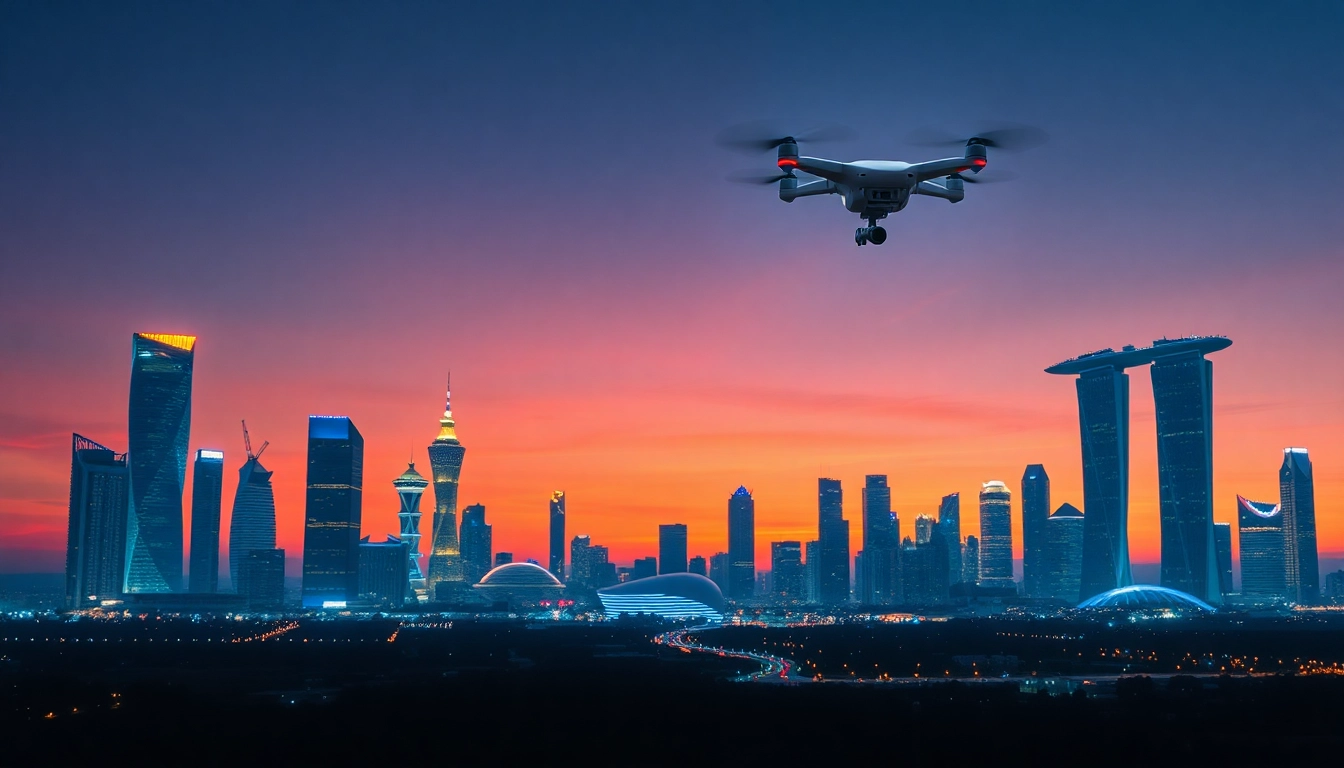Introduction to Technology
Technology is an integral part of our daily lives, influencing everything from communication to transportation. The term encompasses a wide range of tools, systems, and processes that enhance our ability to solve problems and achieve practical goals. As we delve deeper into the world of technology, it becomes crucial to understand its various applications and implications.
What is Technology?
At its core, technology refers to the application of scientific and mathematical knowledge to create solutions that aid human welfare. This definition expands across different fields and industries, asserting that technology is not just about tools and machines, but also includes processes, systems, and methodologies that streamline our everyday tasks and complex operations. Technology can be divisively categorized into two main types: hard technology (hardware, machinery) and soft technology (software, systems). Examples of technology span from the simple lever to advanced artificial intelligence algorithms that predict market trends, illustrating the vast spectrum of human ingenuity.
Historical Evolution of Technology
The journey of technology has been dynamic and reflects the evolution of human civilization. From the discovery of fire that marked the human species’ first leap towards innovation, to the invention of the wheel that transformed transportation, each milestone paved the way for further advancement. Notable historical periods include:
- Industrial Revolution: This period in the 18th and 19th centuries significantly shifted economies from agrarian to industrial, leading to the rise of factories, mechanization, and urbanization.
- Information Age: The late 20th century heralded a new era defined by rapid advancements in computing and telecommunications, resulting in the proliferation of personal computers and the internet.
- Digital Revolution: The ongoing transformation characterized by the integration of digital technologies in all aspects of life, creating a data-driven society.
These milestones highlight how technology continually reshapes societal structures, influencing economic and cultural development worldwide.
Importance of Technology in Society
Technology plays a crucial role in facilitating progress in various sectors. Its importance can be witnessed in numerous ways:
- In Commerce: Technologies such as e-commerce and digital payment solutions have revolutionized buying and selling, enabling businesses of all sizes to reach global markets.
- In Education: Technological advancements have provided tools that enhance learning experiences through online courses, educational platforms, and simulation programs.
- In Healthcare: Medical technology has advanced diagnostics, treatment options, and patient care, contributing significantly to improved health outcomes.
As society navigates complex global challenges, technology remains a vital asset in promoting efficiency and innovation.
Types of Technology
Understanding the different types of technology is essential to appreciate their applications and impacts fully. Below, we elaborate on three critical domains of technology that have transformed the way we live, communicate, and work.
Information Technology
Information technology (IT) refers to the use of systems (especially computers and telecommunications) for storing, retrieving, and sending information. It encompasses hardware, software, networks, and data management processes. Key components include:
- Networking: Connecting computers and devices to share resources and information.
- Database Management: Storing and organizing vast amounts of data for efficient retrieval and use.
- Cybersecurity: Protecting systems and data from unauthorized access and breaches.
IT plays a vital role in almost every industry, supporting the digital infrastructure that drives business operations and communication.
Communication Technology
Communication technology focuses on the transmission of information across channels. It includes traditional forms like radio and television, as well as modern digital mediums such as social media, email, and instant messaging. Recent trends have emphasized:
- Mobile Technology: The rise of smartphones has transformed personal and professional communication.
- Social Media Platforms: These allow users to share content freely, influencing marketing strategies and public discourse.
- Video Conferencing: Technologies like Zoom and Microsoft Teams have revolutionized remote communication, especially in the context of remote work and education.
The effectiveness of communication technology is evident in its ability to connect individuals across the globe, breaking down geographical barriers and fostering collaboration.
Medical Technology
Medical technology encompasses a broad range of healthcare products and solutions that improve patient care. This includes diagnostics, treatment, and monitoring tools. Noteworthy innovations include:
- Telemedicine: Remote consultations using video conferencing technology have expanded access to healthcare.
- Wearable Health Devices: Tools like fitness trackers and smartwatches help individuals monitor their health proactively.
- Robotic Surgery: Precision surgical procedures enhance outcomes and reduce recovery times.
As technology continues to evolve, so too does the potential for advancements in health and wellness, pushing the boundaries of what is possible in medical care.
Technology in Everyday Life
We often take for granted the numerous ways technology infiltrates our daily lives, enhancing convenience and efficiency. Below are key areas highlighting technology’s omnipresence in our routines.
Common Examples of Technology
Everyday technologies manifest in various devices and systems. Some of the most common examples include:
- Smartphones: Devices that combine telecommunications and computing, enabling communication and access to information anytime, anywhere.
- Smart Home Devices: From thermostats to security systems, these products improve home management and security automatically or remotely.
- Online Banking: Digital platforms enable users to manage finances seamlessly, providing greater control and transparency.
These examples illustrate how technology integrates into daily life, making tasks more manageable and enhancing our overall quality of living.
Smart Devices and Their Impact
The rise of smart devices has introduced a new paradigm in personal and professional environments. These interconnected devices gather and share data to improve user experiences. Consider the following impacts:
- Increased Efficiency: Automated tasks save time and reduce the burden on users.
- Environment Monitoring: Smart devices help individuals and organizations track energy consumption, contributing to sustainability efforts.
- Enhanced Communication: Interconnectivity allows for seamless interaction between devices, improving workflows.
The adoption of smart devices indicates a growing reliance on technology to enhance lifestyle and productivity.
Technology in Education
The educational sector has undergone a significant transformation due to the integration of technology. Virtual classrooms, online resources, and educational software have expanded learning opportunities. Key developments include:
- Online Learning Platforms: Services like Coursera and Khan Academy provide accessible learning opportunities to students of all ages, regardless of location.
- Interactive Learning Tools: Technologies such as augmented reality (AR) and virtual reality (VR) create immersive educational experiences that engage students in unprecedented ways.
- Assessment Tools: E-learning platforms facilitate automated assessment and feedback processes, catering to diverse learning rates and styles.
As educational institutions continue to embrace technology, the potential for personalized and efficient learning experiences significantly increases.
Challenges in Technology
Despite its many benefits, technology also presents various challenges that require thoughtful consideration and proactive strategies to overcome.
Security Risks and Concerns
As technology advances, so do security threats. Cybersecurity has become a critical area of focus, driven by increasing incidents of data breaches and cyberattacks. Key security concerns include:
- Data Privacy: Personal and sensitive information is at risk, necessitating robust measures to protect user data.
- Malware and Ransomware: Such malicious software can compromise systems, leading to extensive financial and reputational damage.
- Phishing Attacks: Deceptive tactics targeting users to gain confidential information remain prevalent.
Organizations must prioritize cybersecurity training and implementation of multi-layered security protocols to safeguard their data.
Digital Divide: Access to Technology
The digital divide presents a significant challenge as disparities in access to technology can hinder opportunities for many individuals. Factors influencing the digital divide include:
- Geographic Disparities: Rural areas often lack reliable internet access, widening the gap between urban and rural populations.
- Income Inequities: The cost of devices and internet services can prevent low-income households from accessing essential technologies.
- Educational Barriers: Variability in technology use in schools can create unequal learning environments.
Combating the digital divide requires concerted efforts from governments, private sectors, and communities to ensure equitable access to technology.
Ethical Considerations in Technology
As technology evolves, ethical dilemmas increasingly surface, raising important questions about its implications. Leading ethical considerations include:
- Data Ownership: Who owns the data generated by users? This question is vital regarding user consent and control over personal information.
- Artificial Intelligence Bias: Algorithms that reflect biases can lead to discrimination in fields such as employment, housing, and healthcare decisions.
- Impact on Employment: Automation poses risks of job displacement, prompting discussions about future workforce regulations and training.
Addressing these ethical challenges necessitates collaboration among technologists, lawmakers, and society to foster a technology landscape that prioritizes human welfare.
The Future of Technology
As we look ahead, the trajectory of technology remains both promising and unpredictable. Emerging trends and innovations will shape various aspects of society and the economy.
Emerging Trends to Watch
Several trends are poised to redefine the technological landscape:
- Artificial Intelligence: AI technologies are increasingly integrated into applications in healthcare, finance, and customer service, streamlining processes and improving outcomes.
- Blockchain Technology: Providing secure, decentralized systems, blockchain is affecting industries beyond finance, including supply chain management and healthcare.
- Quantum Computing: With its potential to solve complex problems exponentially faster than traditional computers, quantum computing could revolutionize data processing and modeling.
Staying informed about these emerging trends will enable individuals and organizations to adapt effectively to the changes ahead.
Predictions for Technological Advancements
Looking ahead, several predictions can be made concerning future technological advancements:
- Increased Automation: Automation will continue to redefine industries, improving efficiency while also creating new roles that require advanced skills.
- Enhanced Connectivity: The rollout of 5G technology will allow for faster, more reliable internet access, accelerating innovations in IoT and smart city development.
- Health Innovations: The integration of AI and biotechnology will drive personalized medicine and advanced health monitoring solutions.
By preparing for these advancements, society can leverage technology’s potential to benefit human life dramatically.
Staying Adapted to Rapid Technological Change
As technology continues to evolve rapidly, adapting to changes is crucial. Strategies for organizations and individuals include:
- Continuous Learning: Investing in education and re-skilling programs will allow workforce adaptability to new technologies and processes.
- Agility and Flexibility: Building an agile organizational structure enables quick responses to changing technological landscapes.
- Collaboration: Fostering partnerships across industries can lead to innovative solutions and shared learning experiences.
By embracing a proactive approach, stakeholders can navigate the complexities of technological change and harness its benefits for future generations.



